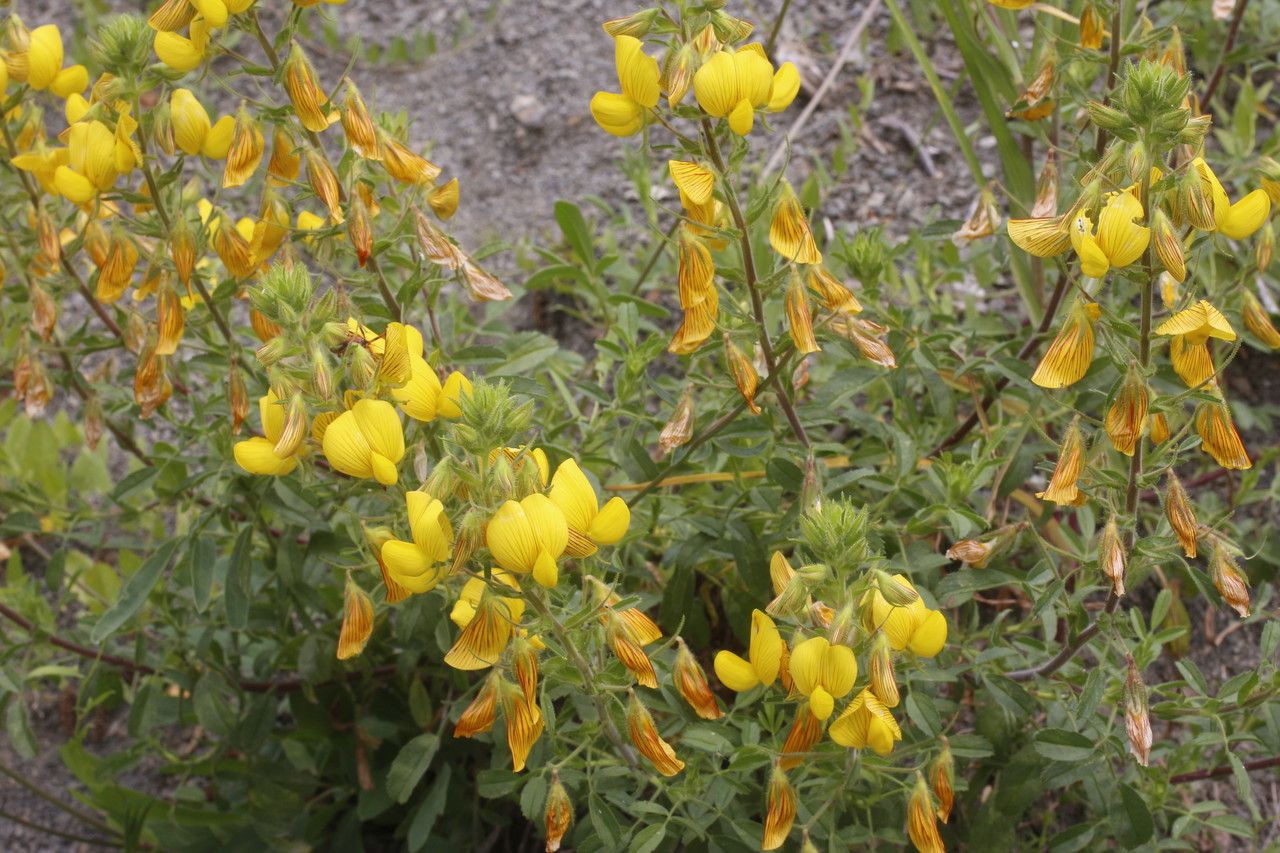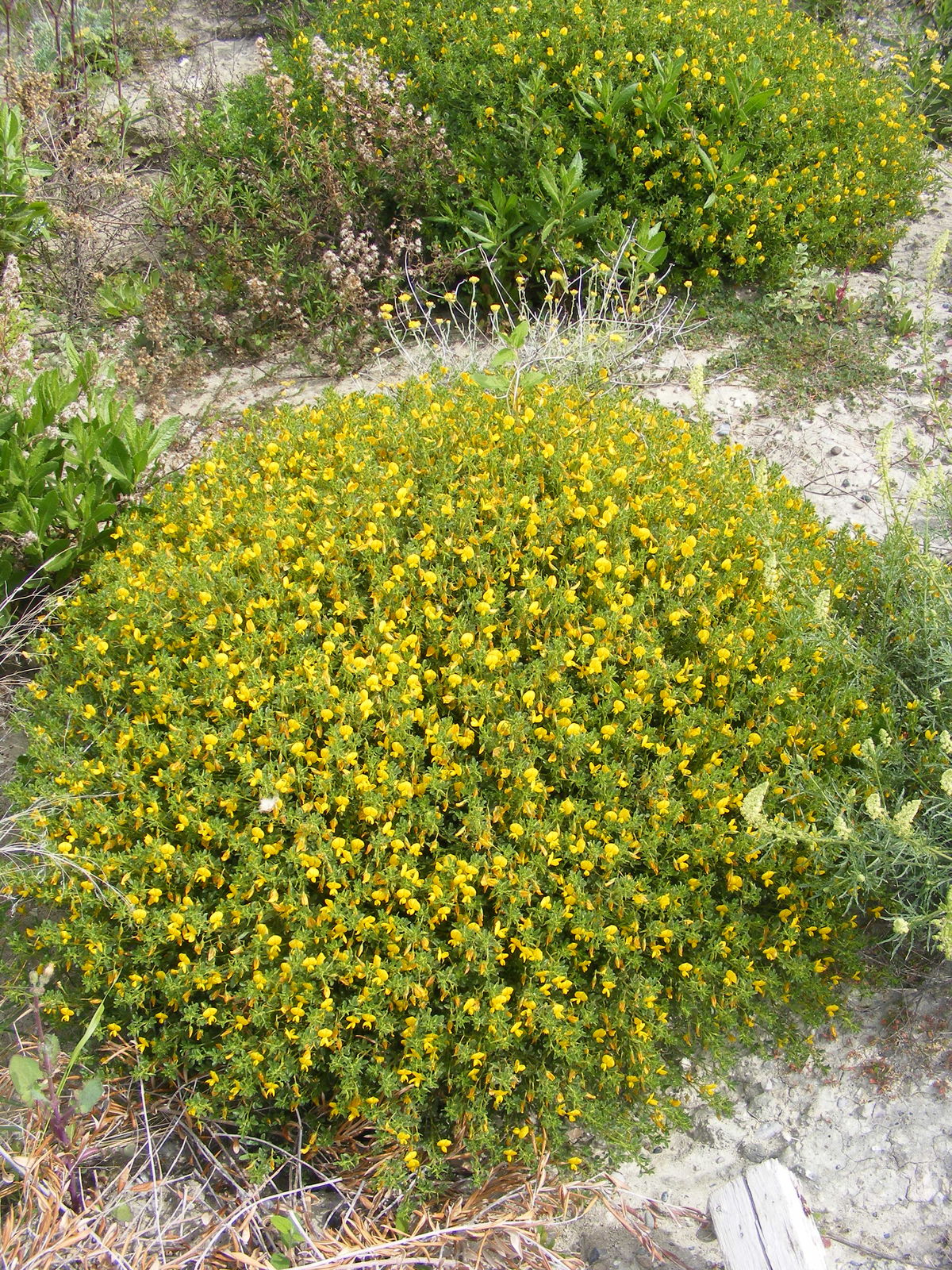Restharrow
ononis natrix
Also known as: ["Common Restharrow","Sarothamnus natrix"]
Overview
A perennial herbaceous plant native to Europe and parts of Asia, known for its creeping stems and pinkish-white flowers.
Benefits & Perks
["drought tolerant","wildlife attractant (bees, butterflies, birds)","medicinal use"]
Botanical Classification
| Phylum: | Magnoliophyta |
| Class: | Magnoliopsida |
| Order: | Fabales |
| Family: | Fabaceae |
| Genus: | Ononis |
| Botanical Name: | Ononis natrix |
Plant Characteristics
Basic Information
- Category: Herbs & Weeds
- Suitable Location: rock gardens, sunny borders, or containers in temperate climates
- Suitable For:
- Is Weed: No
- Allergenicity: low
Environmental Needs
- Climate: {"temperatureRange":"5–35°C"}
- Hardiness: {"zones":"6–9"}
- Misting: rarely required, only if ambient humidity is very low
- Drainage: Fast-draining to prevent root rot.
- Soil Type: Well-draining, loamy soil with some organic matter; tolerates poor soils.
Maintenance Level
- Maintenance Level: low
- Toughness Level: high
- Pruning Frequency: Annually in late winter or early spring; light pruning can be done as needed.
- Pruning Intensity: Moderate; remove up to one-third of old growth to rejuvenate the plant.
Care Details
Ideal Sunlight Coverage:
Full sun (6–8 hours/day); tolerates partial shade in hot climates.
Sunlight Tolerance Tips:
Acclimate gradually to intense sunlight; protect from harsh midday sun; adjust placement based on seasonal light changes.
Care Requirements
Care Difficulty
easymoderate
Sunlight
full sun to partial shade
Rotate plant for even light; use sheer curtains in intense sun; move outdoors in spring/summer.
Watering
every 7–10 days during active growth, reduce in winter
Water thoroughly but infrequently; ensure soil dries between waterings; avoid overwatering.
Soil
well-draining, sandy loam with moderate organic content
pH: Slightly acidic to neutral (pH 6.0–7.0).
Use a mix of potting soil and perlite; avoid heavy clay soils; ensure pots have drainage holes.
Temperature
Prefers 60–75°F (15–24°C); tolerates mild frosts but thrives in moderate temperatures.
Avoid sudden temperature shifts; protect from frost; ensure good air circulation.
Fertilizing
every 4–6 weeks during growing season, none in winter
Fertilize only when actively growing; flush soil occasionally to prevent salt buildup; use organic options for gentle feeding.
Propagation
Methods
Stem cuttings or division; stem cuttings are more common for home growers.
Step-by-Step Propagation Guide
- Take 4–6 inch cuttings.
- Remove lower leaves.
- Dip in rooting hormone.
- Plant in medium.
- Keep moist and warm.
Best Time: Spring or early summer when the plant is actively growing.
Environment
Warm, humid environment with indirect light; maintain consistent moisture.
Medium
Well-draining potting mix with perlite or sand; can also root in water initially.
Hormone
Rooting hormone is optional but recommended for faster rooting.
Timeline
Roots may develop in 3–6 weeks; establish in new pot after 2–3 months.
Tools Needed
Pruning shears, rooting hormone, small pots, well-draining mix.
Quick Tips
Use healthy, non-flowering stems; maintain humidity with a plastic cover; avoid direct sun.
Pruning & Repotting
Pruning Guide
Method
Use clean cuts just above a leaf node or bud; thin out crowded stems.
Pruning Plan
Prune to maintain shape, encourage bushiness, and remove dead or weak growth.
Tools
Pruning shears, sterilizing solution, gloves.
Checklist
Sterilize tools; prune dead/damaged growth; shape the plant; clean up debris.
Repotting Guide
Best Season
Spring, before the active growing season begins.
Pot Size
Choose a pot 1–2 inches larger in diameter than the current one.
Method
Remove plant gently; trim roots if needed; place in new pot with fresh soil; water lightly.
Suggestions
Repot every 2–3 years or when roots fill the pot; beneficial for growth and soil health.
Checklist
Check root bound status; prepare new pot with drainage; use fresh soil mix; water after repotting.
Advanced Care Tips
Watering Mastery
Watering Checklist
Check soil moisture; water deeply; ensure drainage; adjust for season.
How to Apply Water Properly
Water at the base of the plant, ensuring moisture reaches the root zone; allow excess water to drain away; water early in the day to minimize evaporation.
Watering Schedule Tips
Water deeply once the top inch of soil is dry; reduce frequency in winter to prevent root rot.
Soil Improvement
Add perlite or sand for drainage; incorporate compost for fertility; ensure good aeration.
Temperature Stress Management
Signs of Temperature Issues
Wilting, leaf drop, or stunted growth in extreme heat or cold.
Cold Stress
Slows growth; may suffer leaf damage below 20°F (-6°C); roots can rot in cold, wet soil.
Solution: Provide winter protection; improve soil drainage; move potted plants to a sheltered location.
Hot Stress
Leaves may scorch or wilt; growth may slow in prolonged heat above 90°F (32°C).
Solution: Provide partial shade; increase watering; use mulch to retain soil moisture.
Fertilizing Guide
Fertilizing Checklist
Check growth phase; dilute fertilizer; apply to moist soil; avoid foliage contact.
Fertilizing Method
Use balanced liquid fertilizer diluted to half strength; apply every 4–6 weeks during growing season (spring/summer); avoid fertilizing in winter.
Common Problems & Solutions
Toxicity Warning
Cats
Slightly ToxicCats may experience mild gastrointestinal upset if they consume Ononis natrix seeds or roots. The plant is not highly toxic but can cause mild symptoms if ingested.
⚠️ Symptoms:
🌿 Toxic Parts:
⚡ Toxic If:
if eaten
Dogs
Slightly ToxicIn dogs, ingestion of Ononis natrix seeds and roots may lead to mild gastrointestinal upset. The plant is not highly toxic but can cause discomfort if consumed in large amounts.
⚠️ Symptoms:
🌿 Toxic Parts:
⚡ Toxic If:
if eaten
Humans
Slightly ToxicOnonis natrix contains compounds that can cause mild gastrointestinal distress and other mild systemic effects when ingested in significant quantities. The plant's toxicity is not severe but can lead to discomfort.
⚠️ Symptoms:
🌿 Toxic Parts:
⚡ Toxic If:
if eaten
Frequently Asked Questions
Q: Is Ononis natrix toxic to pets?
A: No, it is non-toxic to dogs and cats.
Q: What are the uses of Ononis natrix?
A: It is used medicinally for urinary tract health and as a diuretic.
Q: How does Ononis natrix grow?
A: It is a hardy plant that thrives in dry, sandy soils and full sun.
Quick Reference
| Family: | Fabaceae |
| Care: | easy |
| Light: | full sun to partial shade |
| Water: | every 7–10 days during activ |
Get Expert Care Tips
Download the Plantious app for personalized care reminders and plant identification!
Google Play App Store








